Elisabeth de Carvalho
Performance Evaluation of Dynamic Metasurface Antennas: Impact of Insertion Losses and Coupling
Jun 27, 2022



Abstract:This paper evaluates the performance of multi-user massive multiple-input multiple-output (MIMO) systems in which the base station is equipped with a dynamic metasurface antenna (DMA). Due to the physical implementation of DMAs, conventional models widely-used in MIMO are no longer valid, and electromagnetic phenomena such as mutual coupling, insertion losses and reflections inside the waveguides need to be considered. Hence, starting from a recently proposed electromagnetic model for DMAs, we formulate a zero-forcing optimization problem, yielding an unconstrained objective function with known gradient. The performance is compared with that of full-digital and hybrid massive MIMO, focusing on the impact of insertion losses and mutual coupling.
Floor Map Reconstruction Through Radio Sensing and Learning By a Large Intelligent Surface
Jun 21, 2022

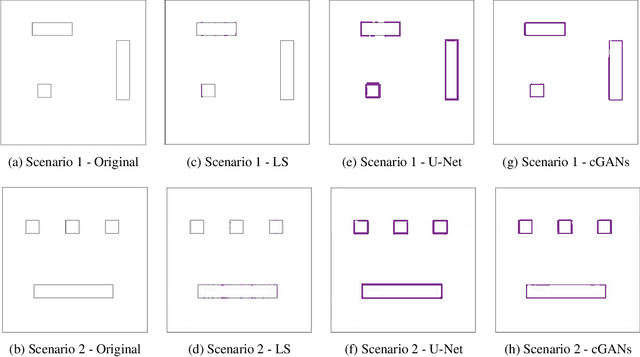
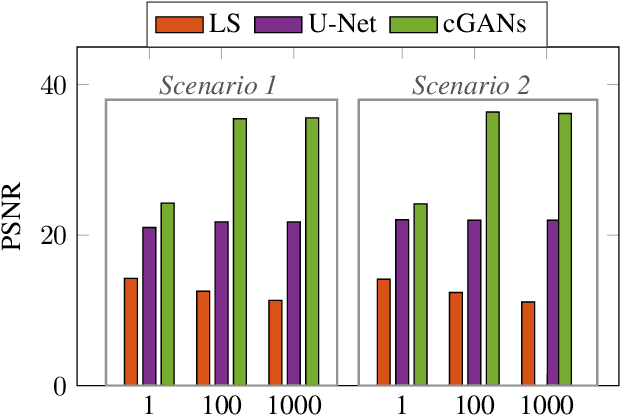
Abstract:Environmental scene reconstruction is of great interest for autonomous robotic applications, since an accurate representation of the environment is necessary to ensure safe interaction with robots. Equally important, it is also vital to ensure reliable communication between the robot and its controller. Large Intelligent Surface (LIS) is a technology that has been extensively studied due to its communication capabilities. Moreover, due to the number of antenna elements, these surfaces arise as a powerful solution to radio sensing. This paper presents a novel method to translate radio environmental maps obtained at the LIS to floor plans of the indoor environment built of scatterers spread along its area. The usage of a Least Squares (LS) based method, U-Net (UN) and conditional Generative Adversarial Networks (cGANs) were leveraged to perform this task. We show that the floor plan can be correctly reconstructed using both local and global measurements.
User Clustering for Rate Splitting using Machine Learning
May 23, 2022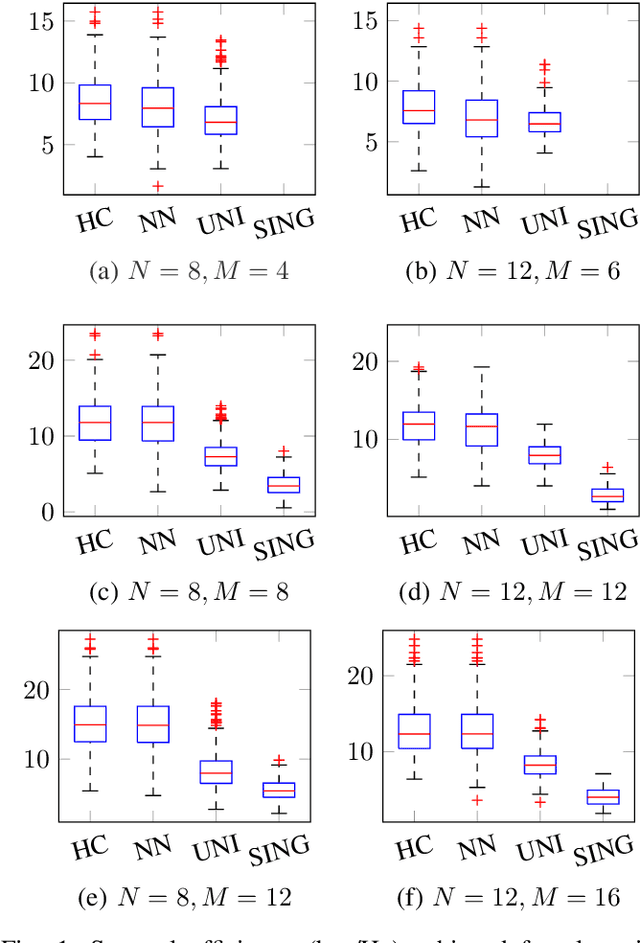
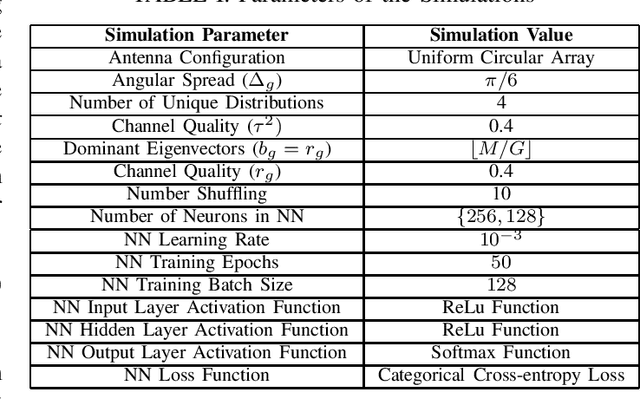

Abstract:Hierarchical Rate Splitting (HRS) schemes proposed in recent years have shown to provide significant improvements in exploiting spatial diversity in wireless networks and provide high throughput for all users while minimising interference among them. Hence, one of the major challenges for such HRS schemes is the necessity to know the optimal clustering of these users based only on their Channel State Information (CSI). This clustering problem is known to be NP hard and, to deal with the unmanageable complexity of finding an optimal solution, in this work a scalable and much lighter clustering mechanism based on Neural Network (NN) is proposed. The accuracy and performance metrics show that the NN is able to learn and cluster the users based on the noisy channel response and is able to achieve a rate comparable to other more complex clustering schemes from the literature.
User Localization using RF Sensing: A Performance comparison between LIS and mmWave Radars
May 17, 2022



Abstract:Since electromagnetic signals are omnipresent, Radio Frequency (RF)-sensing has the potential to become a universal sensing mechanism with applications in localization, smart-home, retail, gesture recognition, intrusion detection, etc. Two emerging technologies in RF-sensing, namely sensing through Large Intelligent Surfaces (LISs) and mmWave Frequency-Modulated Continuous-Wave (FMCW) radars, have been successfully applied to a wide range of applications. In this work, we compare LIS and mmWave radars for localization in real-world and simulated environments. In our experiments, the mmWave radar achieves 0.71 Intersection Over Union (IOU) and 3cm error for bounding boxes, while LIS has 0.56 IOU and 10cm distance error. Although the radar outperforms the LIS in terms of accuracy, LIS features additional applications in communication in addition to sensing scenarios.
Location- and Orientation-aware Millimeter Wave Beam Selection for Multi-Panel Antenna Devices
Mar 22, 2022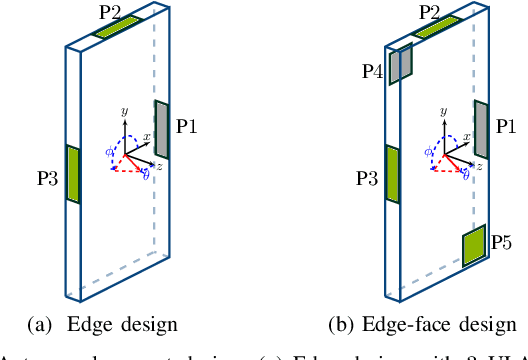
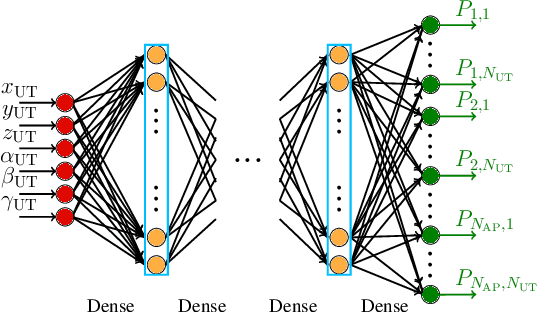
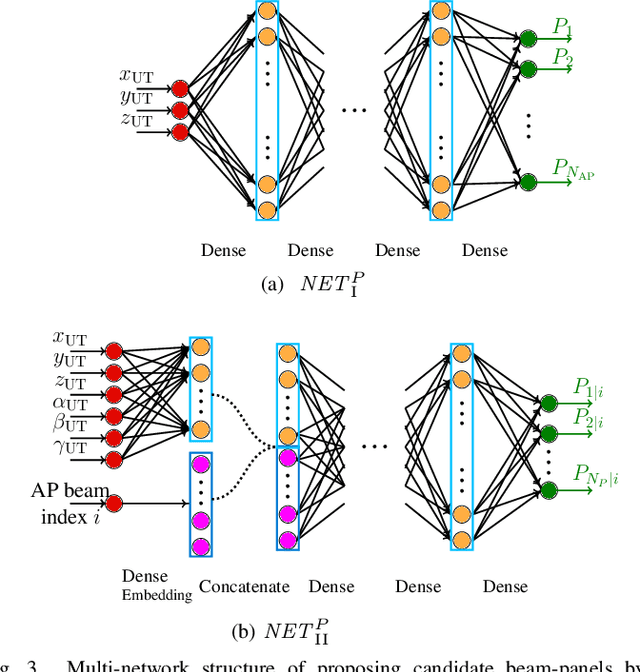
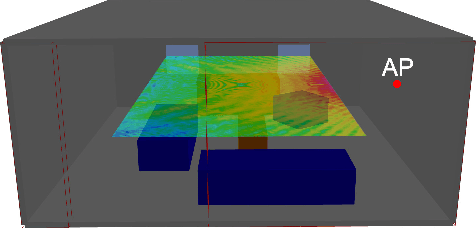
Abstract:While initial beam alignment (BA) in millimeter-wave networks has been thoroughly investigated, most research assumes a simplified terminal model based on uniform linear/planar arrays with isotropic antennas. Devices with non-isotropic antenna elements need multiple panels to provide good spherical coverage, and exhaustive search over all beams of all the panels leads to unacceptable overhead. This paper proposes a location- and orientation-aware solution that manages the initial BA for multi-panel devices. We present three different neural network structures that provide efficient BA with a wide range of training dataset sizes, complexity, and feedback message sizes. Our proposed methods outperform the generalized inverse fingerprinting and hierarchical panel-beam selection methods for two considered edge and edge-face antenna placement designs.
Radio Sensing with Large Intelligent Surface for 6G
Nov 04, 2021



Abstract:This paper leverages the potential of Large Intelligent Surface (LIS) for radio sensing in 6G wireless networks. Major research has been undergone about its communication capabilities but it can be exploited as a formidable tool for radio sensing. By taking advantage of arbitrary communication signals occurring in the scenario, we apply a Matched Filtering (MF) processing to the output signal from the LIS to obtain a radio map that describes the physical presence of passive devices (scatterers, humans) which act as virtual sources due to the communication signal reflections. We then assess the usage of machine learning (k-means clustering), image processing and computer vision (template matching and component labeling) to extract meaningful information from these radio maps. As an exemplary use case, we evaluate this method for both active and passive user detection in an indoor setting. The results show that the presented method has high application potential as we are able to detect around 98% of humans passively and 100% active users by just using communication signals of commodity devices even in quite unfavorable Signal-to-Noise Ratio (SNR) conditions.
A Deep Learning Approach to Location- and Orientation-aided 3D Beam Selection for mmWave Communications
Oct 13, 2021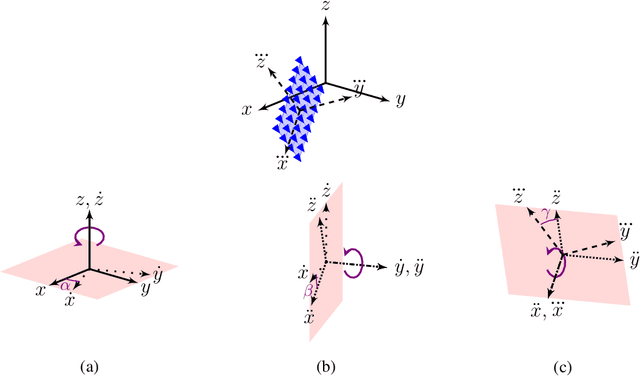

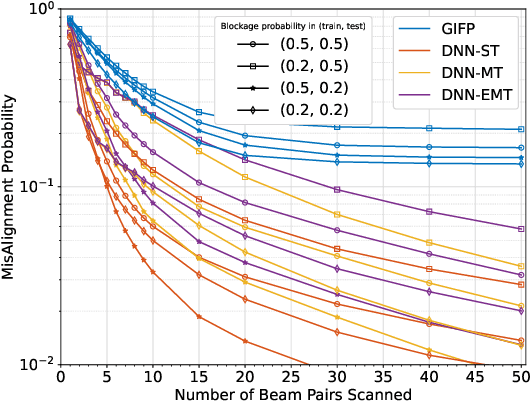

Abstract:Position-aided beam selection methods have been shown to be an effective approach to achieve high beamforming gain while limiting the overhead and latency of initial access in millimeter wave (mmWave) communications. Most research in the area, however, has focused on vehicular applications, where the orientation of the user terminal (UT) is mostly fixed at each position of the environment. This paper proposes a location- and orientation-based beam selection method to enable context information (CI)-based beam alignment in applications where the UT can take arbitrary orientation at each location. We propose three different network structures, with different amounts of trainable parameters that can be used with different training dataset sizes. A professional 3-dimensional ray tracing tool is used to generate datasets for an IEEE standard indoor scenario. Numerical results show the proposed networks outperform a CI-aided benchmark such as the generalized inverse fingerprinting (GIFP) method as well as hierarchical beam search as a non-CI-based approach. Moreover, compared to the GIFP method, the proposed deep learning-based beam selection shows higher robustness to different line-of-sight blockage probability in the training and test datasets and lower sensitivity to inaccuracies in the position and orientation information.
Energy-Efficient Design for RIS-assisted UAVcommunications in beyond-5G Networks
Sep 24, 2021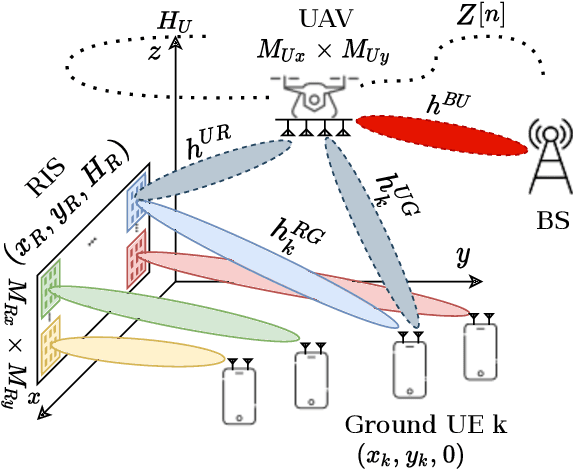
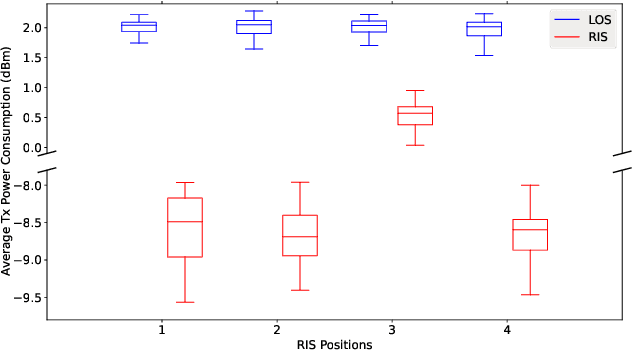


Abstract:The usage of Reconfigurable Intelligent Surfaces (RIS) in conjunction with Unmanned Ariel Vehicles (UAVs) is being investigated as a way to provide energy-efficient communication to ground users in dense urban areas. In this paper, we devise an optimization scenario to reduce overall energy consumption in the network while guaranteeing certain Quality of Service (QoS) to the ground users in the area. Due to the complex nature of the optimization problem, we provide a joint UAV trajectory and RIS phase decision to minimize transmission power of the UAV and Base Station (BS) that yields good performance with lower complexity. So, the proposed method uses a Successive Convex Approximation (SCA) to iteratively determine a joint optimal solution for UAV Trajectory, RIS phase and BS and UAV Transmission Power. The approach has, therefore, been analytically evaluated under different sets of criterion.
Decentralized Design of Fast Iterative Receivers for Massive and Extreme-Large MIMO Systems
Jul 23, 2021



Abstract:Despite the extensive use of a centralized approach to design receivers at the base station for massive multiple-input multiple-output (M-MIMO) systems, their actual implementation is a major challenge due to several bottlenecks imposed by the large number of antennas. One way to deal with this problem is by fully decentralizing the classic zero-forcing receiver across multiple processing nodes based on the gradient descent method. In this paper, we first explicitly relate this decentralized receiver to a distributed version of the Kaczmarz algorithm and to the use of the successive interference cancellation (SIC) philosophy to mitigate the residual across nodes. In addition, we propose two methods to further accelerate the initial convergence of these iterative decentralized receivers by exploring the connection with the Kaczmarz algorithm: 1) a new Bayesian distributed receiver, which can eliminate noise on an iteration basis; 2) a more practical method for choosing the relaxation parameter. The discussion also consider spatial non-stationarities that arise when the antenna arrays are extremely large (XL-MIMO). We were able to improve the numerical results for both spatially stationary and non-stationary channels, but mainly the non-stationary performance can still be improved compared to the centralized ZF receiver. Future research directions are provided with the aim of further improving the applicability of the receiver based on the principle of successive residual cancellation (SRC).
Uncoordinated and Decentralized Processing in Extra-Large MIMO Arrays
Mar 11, 2021


Abstract:We propose a decentralized receiver for extra-large multiple-input multiple-output (XL-MIMO) arrays. Our method operates with no central processing unit (CPU) and all the signal detection tasks are done in distributed nodes. We exploit a combined message-passing framework to design an uncoordinated detection scheme that overcomes three major challenges in the XL-MIMO systems: computational complexity, scalability and non-stationarities in user energy distribution. Our numerical evaluations show a significant performance improvement compared to benchmark distributed methods while operating very close to the centralized receivers.
 Add to Chrome
Add to Chrome Add to Firefox
Add to Firefox Add to Edge
Add to Edge